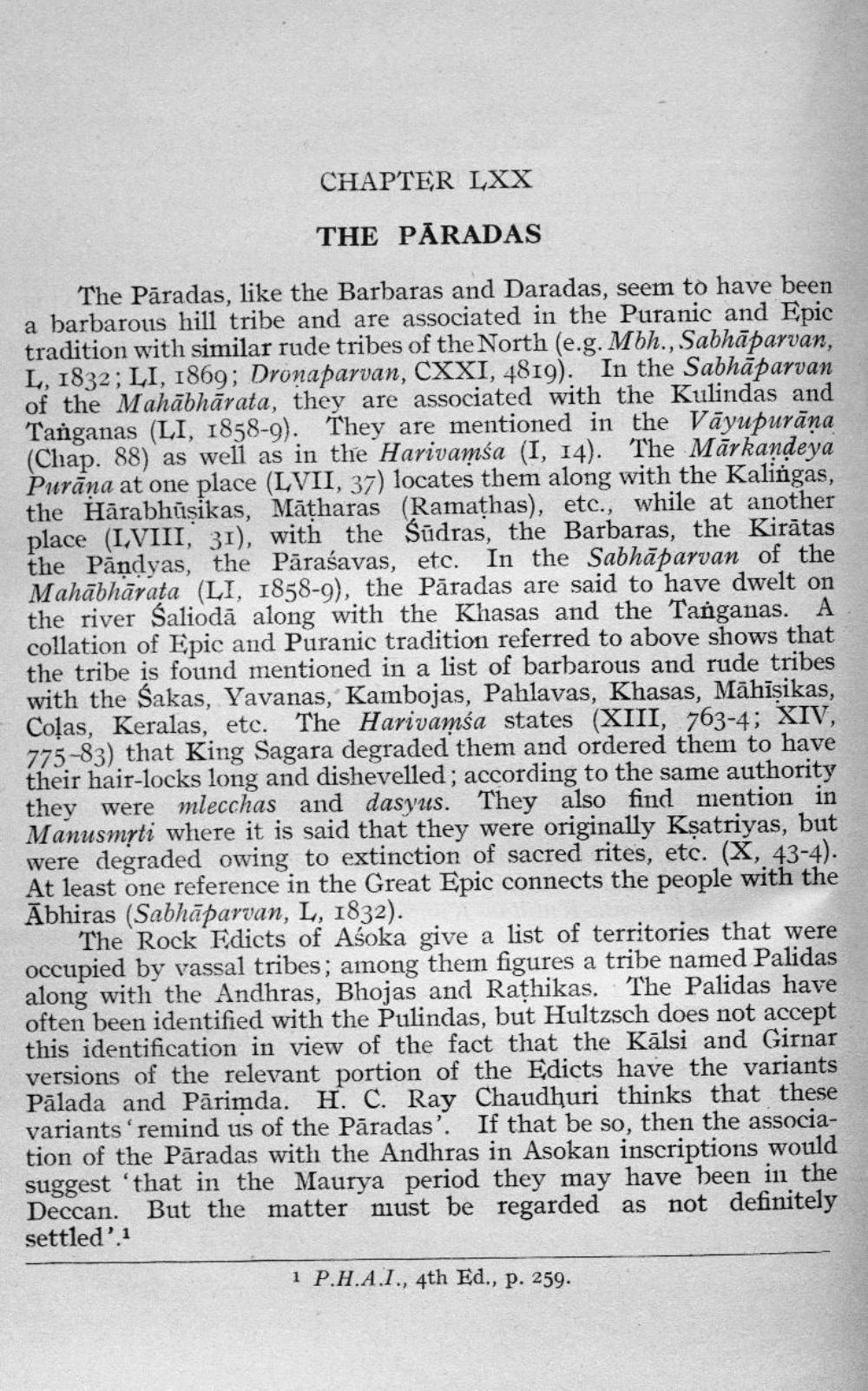________________
CHAPTER LXX
THE PĀRADAS
The Pāradas, like the Barbaras and Daradas, seem to have been a barbarous hill tribe and are associated in the Puranic and Epic tradition with similar rude tribes of the North (e.g. Moh., Sabhāparvan, L, 1832; LI, 1869; Dronaparvan, CXXI, 4819). In the Sabhāparvan of the Mahābhārata, they are associated with the Kulindas and Tanganas (LI, 1858-9). They are mentioned in the Vāyupurāna (Chap. 88) as well as in the Harivamsa (I, 14). The Mārkandeya Purāna at one place (LVII, 37) locates them along with the Kalingas, the Hārabhusikas. Mātharas (Ramathas). etc. while at another place (LVIII, 31), with the Sūdras, the Barbaras, the Kirātas the Pāņdyas, the Pāraśavas, etc. In the Sabhāparvan of the Mahābhārata (LI, 1858-9), the Pāradas are said to have dwelt on the river Saliodā along with the Khasas and the Tanganas. A collation of Epic and Puranic tradition referred to above shows that the tribe is found mentioned in a list of barbarous and rude tribes with the Sakas, Yavanas, Kambojas, Pahlavas, Khasas, Māhīşikas, Coļas, Keralas, etc. The Harivamśa states (XIII, 763-4; XIV, 775-83) that King Sagara degraded them and ordered them to have their hair-locks long and dishevelled; according to the same authority they were mlecchas and dasyus. They also find mention in Manusmyti where it is said that they were originally Ksatriyas, but were degraded owing to extinction of sacred rites, etc. (X, 43-4). At least one reference in the Great Epic connects the people with the Abhiras (Sabhāparvan, L, 1832).
The Rock Edicts of Asoka give a list of territories that were occupied by vassal tribes; among them figures a tribe named Palidas along with the Andhras, Bhojas and Rathikas. The Palidas have often been identified with the Pulindas, but Hultzsch does not accept this identification in view of the fact that the Kālsi and Girnar versions of the relevant portion of the Edicts have the variants Palada and Parimda. H. C. Ray Chaudhuri thinks that these variants' remind us of the Pāradas'. If that be so, then the association of the Pāradas with the Andhras in Asokan inscriptions would suggest that in the Maurya period they may have been in the Deccan. But the matter must be regarded as not definitely settled'1
1 P.H.A.I., 4th Ed., p. 259.




